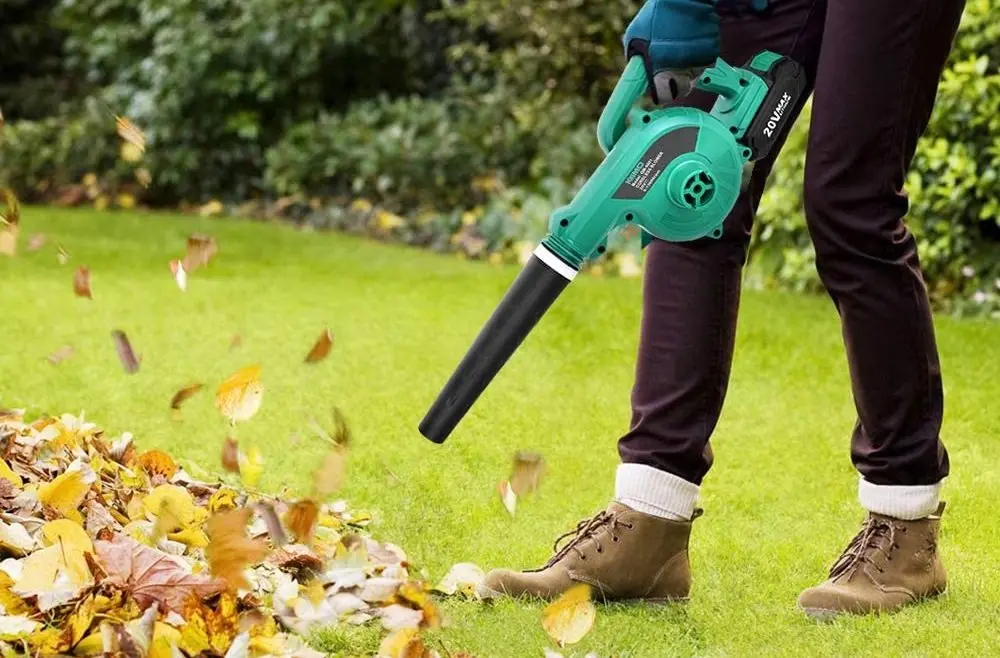As autumn leaves paint our landscapes in vibrant hues, many of us reach for our trusty leaf blowers to keep our yards tidy. If you’re considering an electric leaf blower or already own one, you might be wondering, “How much dB does an electric leaf blower produce?”
This comprehensive guide will not only answer that question but also provide valuable insights into noise levels, their impact, and how to choose the right electric leaf blower for your needs.
What is dB and Why Does it Matter?
Before we dive into the specifics of electric leaf blower noise, let’s quickly review what dB means. dB, or decibels, is a unit used to measure the intensity of sound. The decibel scale is logarithmic, which means that an increase of 10 dB represents a sound that is 10 times more intense.
Understanding dB levels is crucial because excessive noise can have significant impacts on our health, well-being, and community relationships. This is especially important when using outdoor power equipment like leaf blowers.
Electric Leaf Blower Noise Levels: The Numbers You Need to Know
So, how much dB does an electric leaf blower typically produce? On average, electric leaf blowers generate noise levels between 65 and 75 dB when measured from a distance of 50 feet. However, this can vary depending on the specific model and operating conditions.
To put this into perspective:
- Normal conversation: 60 dB
- Vacuum cleaner: 70 dB
- City traffic (inside car): 80-85 dB
- Gas-powered lawn mower: 85-90 dB
As you can see, electric leaf blowers are generally quieter than their gas-powered counterparts, which can produce noise levels of 80-85 dB or higher.
Factors Affecting Electric Leaf Blower Noise
Several factors can influence the noise level of an electric leaf blower:
- Motor Power: Generally, more powerful motors produce more noise.
- Fan Design: The design and quality of the fan can impact noise levels.
- Nozzle Shape: The shape and size of the nozzle can affect how noise is directed.
- Operating Speed: Higher speeds typically result in increased noise.
- Maintenance: Well-maintained blowers tend to run more quietly.
The Human Impact of Leaf Blower Noise
While the numbers are important, it’s crucial to consider the human element when discussing leaf blower noise. Excessive noise can lead to:
- Stress and anxiety
- Sleep disturbances
- Difficulty concentrating
- Hearing damage (with prolonged exposure)
- Strained relationships with neighbors
Many of us have experienced the frustration of a peaceful Sunday morning interrupted by the whirr of a leaf blower. By choosing quieter electric models and using them considerately, we can maintain our yards without causing undue disturbance to others.
Choosing a Quieter Electric Leaf Blower
If you’re in the market for a new electric leaf blower or looking to reduce the noise from your current one, consider these tips:
- Look for Low-Noise Models: Some manufacturers specifically design low-noise blowers.
- Check the dB Rating: Look for models with ratings below 70 dB if possible.
- Variable Speed Control: This feature allows you to use lower, quieter speeds when full power isn’t needed.
- Read User Reviews: Real-world experiences can provide valuable insights into noise levels.
- Consider Corded vs. Cordless: Corded models are often slightly quieter than battery-powered ones.
Best Practices for Quieter Leaf Blowing
Even with a relatively quiet electric leaf blower, there are ways to further minimize noise disturbance:
- Time it Right: Use your blower during reasonable hours, avoiding early mornings or late evenings.
- Use the Lowest Effective Speed: Don’t use more power than necessary for the task at hand.
- Wear Hearing Protection: This protects your hearing and makes you more aware of the noise you’re producing.
- Maintain Your Blower: Regular maintenance can help keep noise levels down.
- Consider Alternatives: For small areas, a rake or broom might be quieter and just as effective.
The Future of Quiet Leaf Blowing
As awareness of noise pollution grows, manufacturers are continuously working on developing quieter leaf blowers. Some exciting innovations on the horizon include:
- Improved fan designs for more efficient airflow
- Advanced motor technology for quieter operation
- Noise-dampening materials in blower construction
- Smart features that automatically adjust power and noise based on the task
Conclusion:
In the end, the question “How much dB does an electric leaf blower produce?” is about more than just numbers. It’s about finding the right balance between maintaining our outdoor spaces and respecting our community’s peace and quiet.
Electric leaf blowers, with their lower noise levels compared to gas-powered models, represent a step in the right direction. By choosing quieter models, using them responsibly, and being mindful of our neighbors, we can keep our yards tidy without creating unnecessary noise pollution.
Remember, a well-maintained yard is a joy to behold, but so is a peaceful neighborhood. As you reach for your electric leaf blower this autumn, take a moment to appreciate the vibrant colors, the crisp air, and the satisfaction of a job well done – all while keeping the noise to a minimum. After all, isn’t the sound of rustling leaves one of the best parts of the season?







